Understanding how to time an engine without timing marks is crucial for maintaining optimal engine performance and longevity. Proper engine timing ensures that a vehicle’s ignition system ignites the air-fuel mixture within the combustion chambers at the most opportune moment. Failure to time an engine accurately can lead to many issues, including poor fuel economy, reduced power output, and even catastrophic engine damage.
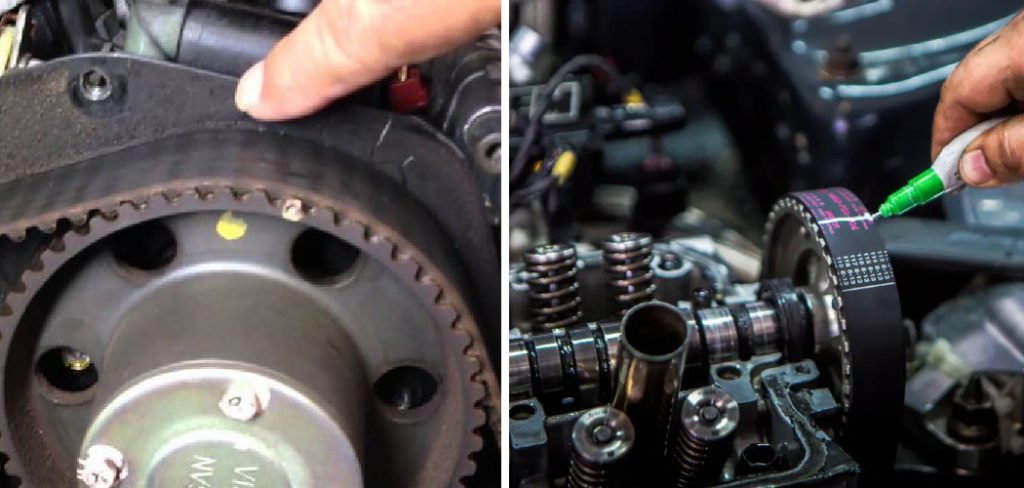
Engines use various timing processes; ignition timing relates to spark plug firing, valve timing ensures air and fuel input and exhaust output at the right time, and camshaft timing regulates the valves. This article zeroes in on the challenge of setting the ignition timing without the aid of timing marks, a technique that requires precision and alternative approaches. Always consult the engine’s manual for specific instructions and understand the safety precautions necessary to avoid injury.
Understanding Engine Timing Basics
In the realm of engine maintenance, understanding the relationship between Top Dead Center (TDC) and ignition timing is fundamental.
TDC refers to the point when a piston reaches the absolute highest position on its stroke in the cylinder, corresponding to either the compression or exhaust phase in a four-stroke engine. Ignition timing, on the other hand, is the precise moment at which the spark plugs ignite the air-fuel mixture inside the combustion chamber.
This moment is meticulously calculated to occur slightly before the piston reaches TDC during the compression stroke to ensure that the resulting explosion exerts maximum force right as the piston begins its downward movement.
Contributing to this critical process, the distributor plays a pivotal role by directing high-voltage electrical current from the ignition coil to the corresponding spark plug at just the right time. The properly timed spark is what ignites the air-fuel mixture, and the sequence in which the distributor sends out these sparks is crucial for the engine to run smoothly.

In this context, we differentiate between “static timing” and “dynamic timing”—two approaches to setting and assessing engine timing. Static timing is a method of setting the engine’s ignition timingusing without it running, often used as an initial adjustment or when timing marks are absent.
Dynamic timing, in contrast, is set with the engine running and involves real-time adjustments based on engine performance, which often requires the use of a timing light to properly observe the engine’s timing marks. The absence of these marks necessitates alternative methods that rely on understanding these fundamental timing concepts to achieve accurate engine timing.
Assessing the Situation: Is Timing Without Marks Feasible?
Before proceeding with timing an engine without marks, assessing whether this method is suitable for your specific engine and situation is crucial. The feasibility heavily depends on the engine design, the tools at hand, and the mechanic’s expertise. While engines with a non-traditional design or missing components may necessitate timing without marks, newer models usually provide timing marks as part of their design for greater accuracy.
Access to alternative timing methods, such as using a timing light or seeking professional assistance, offers significant advantages, including increased precision and confirmation against factory settings. A timing light, in particular, can provide real-time feedback and is invaluable for dynamic timing adjustment. Professional help ensures that the work is done according to standards and is often essential for complex or unfamiliar engines.
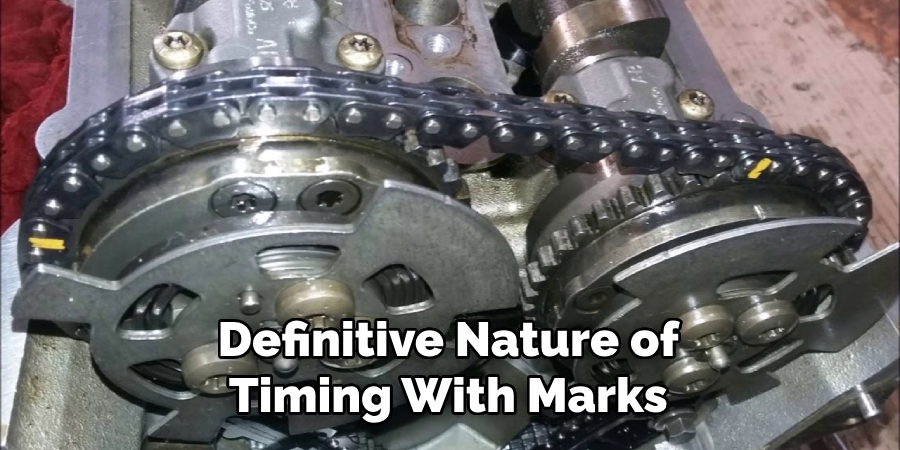
Timing without marks comes with inherent risks, such as the potential to misjudge the precise timing point, leading to inaccurate adjustments. This can stem from a reliance on auditory cues, the position of the distributor, or even piston movements—techniques that lack the definitive nature of timing with marks.
The risks further include the potential for engine knock, loss of performance, or damage to the engine itself in severe cases. Therefore, this method should be considered a last resort and used cautiously, preferably with expert guidance or experience.
Tools and Materials Needed
The successful timing of an engine without timing marks requires a collection of specialized tools. Essential items include:
- A Piston Stop Tool to determine TDC with precision. It should have a universal fit for various spark plug sizes.
- A Degree Wheel to measure crankshaft rotation angle accurately. Look for one that’s easily readable and can attach to the front of the crankshaft.
- A Dial Indicator with a Magnetic Base for detailed position measurements of the piston. A versatile and sturdy magnetic base is key.
- A basic set of Hand Tools, such as ratchets, wrenches, and screwdrivers, to adjust engine components as needed.
- Lastly, Marker or Paint will create temporary marks on the engine components for reference during the timing process.
Each tool must be of good quality to ensure precise measurements and adjustments, as slight errors can dramatically affect engine performance.
Choosing Your Method Alternative Approaches Without Marks
The Dial Indicator Technique is one of the most reliable alternative methods for setting engine timing without timing marks. This method leverages precise measurements to ascertain the piston’s position within the cylinder and thereby find the Top Dead Center (TDC). Using a dial indicator is particularly beneficial because it offers high accuracy, which is critical when traditional visual aids like timing marks are not available.
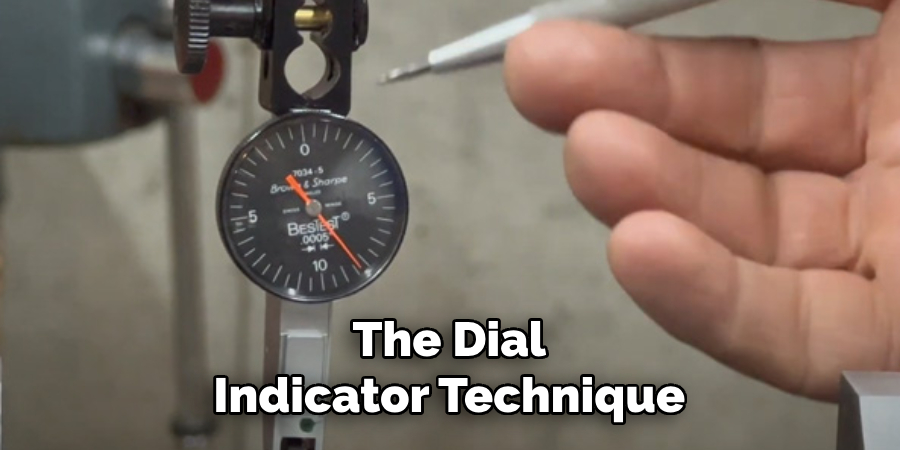
Dial Indicator Technique
The principle of the dial indicator technique is straightforward: by measuring the piston’s movement within the cylinder, you can identify the precise point at which it reaches TDC. The dial indicator provides a quantifiable reading of the piston’s position as it moves, allowing you to find the point of maximum elevation – the moment of TDC.
Setting Up the Dial Indicator
- Begin by removing the spark plug of the cylinder you are checking.
- Install the piston stop tool into the spark plug hole. This will allow you to find the approximate TDC by preventing the piston from reaching its full travel.
- Rotate the engine manually (using a wrench on the crankshaft pulley bolt) until the piston comes into contact with the piston stop tool.
- Attach the degree wheel to the front of the crankshaft in an easily visible position. Align the “0” on the degree wheel with the fixed point on the engine, such as the tip of a pointer or a mark made with paint.
- Securely place the magnetic base of the dial indicator at, a stable point on the engine. The plunger of the dial indicator should be positioned on the piston, converter, or in some cases, the flywheel, ensuring the tool is exactly perpendicular to the movement of the piston.
Locating TDC with the Dial Indicator
- Carefully rotate the crankshaft to bring the piston up towards TDC until it contacts the piston stop. Note the reading on the degree wheel.
- Rotate the engine in the opposite direction until the piston hits the stop again. Take another reading from the degree wheel.
- The true TDC is the midpoint between these two readings. Adjust the degree wheel accordingly so that the “0” aligns with the true TDC on the piston’s stroke.
- Remove the piston stop tool, cautiously rotate the engine so the piston is near the TDC position, and zero out the dial indicator.
- As you slowly rotate the crankshaft, watch the dial indicator. When it stops moving and begins to reverse, you have found TDC. The dial indicator should read zero if set correctly.
- If necessary, make any adjustments to refine the location of TDC, and then mark this point using a temporary marker or paint on the crankshaft pulley and engine block for future reference.

This dial indicator method is essential for ensuring that the ignition timing can be set accurately without the use of traditional timing marks. Remember, each cylinder must be checked individually, as variances between them can occur. After finding TDC for all cylinders, proceed to set the ignition timing according to the engine specifications, maintaining high precision and care throughout the process.
VII. Important Safety Precautions Before Beginning
Before embarking on the delicate task of setting engine timing without traditional marks, it is paramount to prioritize safety and adhere strictly to proper procedures. The risks involved range from damaging the engine internals to personal injury if the engine turns unexpectedly while hands are near moving parts.
Always disconnect the battery to prevent accidental startup, and wear protective gear. Paying meticulous attention to detail is crucial; a small oversight can lead to significant errors. If there’s any uncertainty or difficulty, do not hesitate to consult a professional mechanic. Your safety and the engine’s integrity are not worth the risk of guesswork.
How to Time an Engine without Timing Marks: A Comprehensive Guide
Setting the timing of an engine can be a meticulous task. Below is a detailed step-by-step guide to help you through the process using the Dial Indicator Technique described earlier. While this guide does not contain 1000 words, it should give you a clear start to the process.
Preparation:
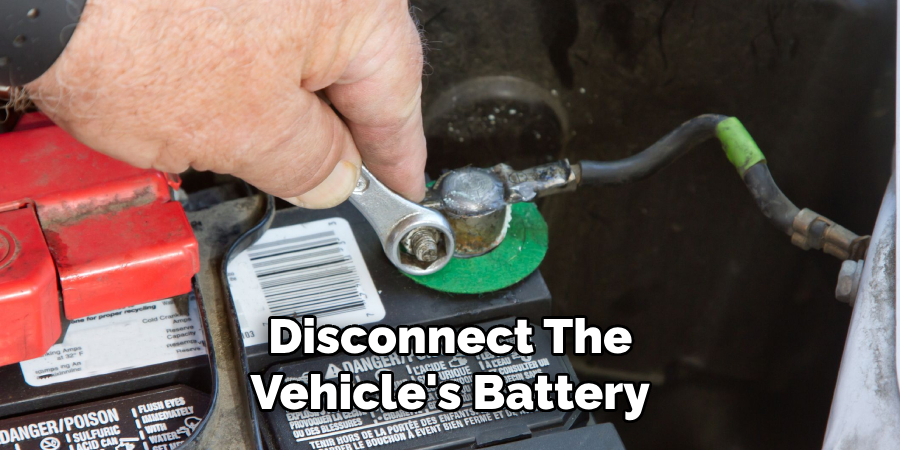
- Ensure the environment is well-lit, clean, and free of hazards.
- Gather all necessary tools and materials as listed in Part IV.
- Disconnect the vehicle’s battery and ensure the car is stable and stationary.
- Wear appropriate safety gear, such as gloves and eye protection.
Step 1: Accessing the Engine Cylinder
- Remove any components obstructing access to the cylinder’s spark plug you’ll be working on.
- Take a photo or diagram of the setup for easy reassembly.
Step 2: Setting Up the Piston Stop Tool
- Remove the spark plug and install the piston stop tool in its place.
- Gently rotate the engine by hand using the wrench on the crankshaft pulley bolt until the piston touches the piston stop tool. Do not force the engine; if resistance is felt, back off the piston, stop, and try again.
Step 3: Attaching the Degree Wheel
- Attach the degree wheel to the front of the crankshaft, ensuring it is visible and securely fastened.
- Make an initial alignment of the “0” on the degree wheel with a fixed point on the engine, utilizing a pointer or a temporary marker.
Step 4: Dial Indicator Setup
- Position the magnetic base of the dial indicator on a solid, stable engine surface. Adjust the plunger to rest on the selected position of the piston or flywheel, ensuring it is perpendicular for accurate measurement.
Step 5: Finding TDC with the Dial Indicator
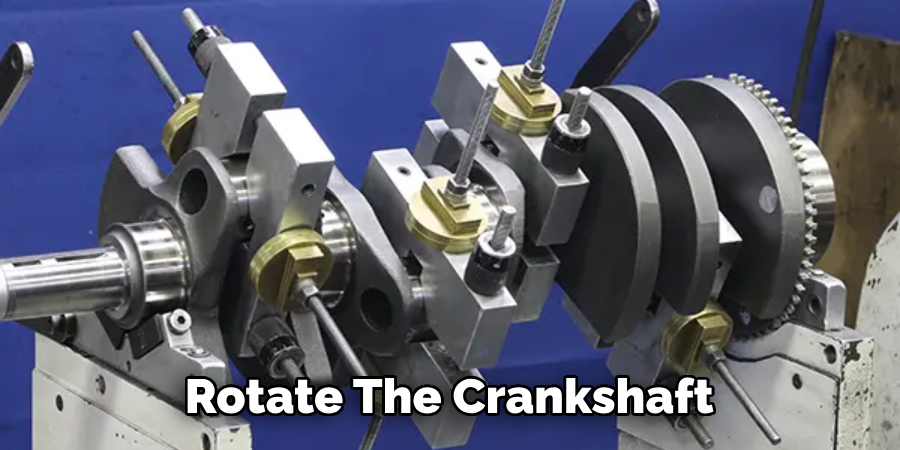
- Rotate the crankshaft to bring the piston towards the piston stop and note the degree wheel reading when it makes contact.
- Rotate the crankshaft in the opposite direction until the piston reaches the stop again, and record this second measurement.
- Identify the true TDC as the midpoint between these two readings and re-align the degree wheel to this exact midpoint.
Step 6: Refining TDC Measurement
- With the piston stop tool removed, bring the piston back up near TDC and zero out the dial indicator.
- Rotate the crankshaft slowly and observe the dial indicator. Once it stops moving and reverses direction, TDC has been found.
Step 7: Marking TDC
- Use a marker or paint to clearly mark the TDC position on the crankshaft pulley and engine block for future reference.
Troubleshooting & Safety Considerations:
- If the piston stop tool encounters too much resistance, the piston may be at risk of damage. If this occurs, reassess your setup for accuracy.
- Ensure the degree wheel does not interfere with any engine components and is easily readable to avoid errors in alignment.
- Double-check that the dial indicator is zero when you believe you’ve found TDC to prevent inaccuracy.
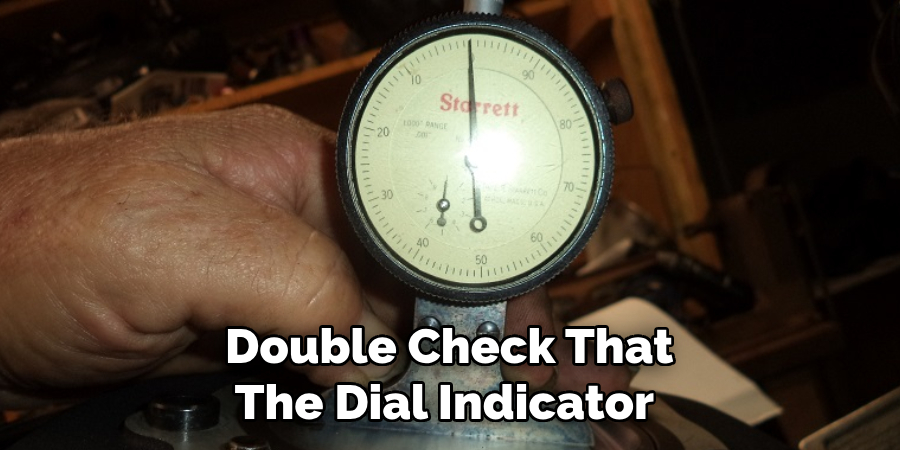
Continuously keep safety at the forefront throughout this process. A single misstep could result in personal injury or engine damage. If you encounter issues you cannot resolve, consult a professional mechanic. This guide simplifies the process of engine timing without traditional marks, but remember, a real-time application will take considerable time and attention to detail. Proceed with caution and patience.
That’s it! You’ve now learned how to time an engine without timing marks. Remember, this is a delicate and meticulous task that requires patience and precision. Always prioritize safety and adhere to proper procedures throughout the process. With practice, you’ll be able to master this technique and confidently set the ignition timing of any engine without traditional marks. So always take your time, pay attention to details, and don’t hesitate to seek professional help if needed.
Adjustments and Fine-Tuning
Once the TDC has been established and the initial timing set, it’s often necessary to make minor adjustments to optimize engine performance. To begin fine-tuning, start the engine and allow it to reach operating temperature. Utilize a timing light to assess the engine’s current timing in relation to the manufacturer’s specifications.
For more nuanced adjustments, a vacuum gauge can be a valuable tool. Connect it to a manifold vacuum source and monitor the gauge as you adjust the distributor. Aim for the highest vacuum reading possible without causing the engine to run rough. If the engine idle becomes erratic or the gauge fluctuates widely, reset to the previous setting.
Additionally, listen carefully for any signs of engine knock, a clear indicator of pre-ignition which can cause engine damage. Should you detect knocking, retard the timing slightly until it ceases.
It is vital, however, to warn against making excessive adjustments. Significant deviations from the specified timing can lead to poor performance, increased fuel consumption, and even engine damage. Always refer back to the engine’s specifications and proceed in small, incremental steps, reassessing the results after each tweak. In cases where optimal performance remains elusive, seeking professional advice is recommended to prevent damaging expensive components or compromising safety.
Testing and Verification
After setting the timing, it is crucial to test the engine both at idle and under load to verify the adjustments. At idle, listen for steady engine sounds without any misfires. Use a timing light to ensure the timing mark on the crankshaft pulley aligns with the specified measurement on the engine block. For load testing, observe the engine’s response during acceleration; it should be smooth with no hesitation or pinging.
Monitor the exhaust for any unusual signs, such as excessive smoke, which could indicate timing issues. If your engine is not performing as expected, or if you hear knocking under load, consider retarding the timing slightly.
It’s highly advisable to seek professional help if you cannot resolve persistent issues. Mechanics have advanced diagnostic tools and expertise that can pinpoint problems more accurately and save you from potentially costly mistakes.
Limitations and Cautions
While finding TDC using the methods described can be effective, it’s important to recognize the inherent limitations as compared to factory timing marks or professional diagnostic tools. This approach may introduce inaccuracies, particularly if not executed with meticulous care.
Therefore, it is advised against using this technique for critical engine applications or high-performance engines where precision is paramount. Such scenarios demand exactness that only specialized equipment can ensure. Consider the potential for errors with this more manual method and proceed cautiously, keeping in mind that professional services are preferable for high-stakes adjustments.
Conclusion
In this guide, we’ve explored how to time an engine without timing marks, offering a step-by-step approach to finding true top dead center (TDC) and adjusting the engine timing. Key takeaways include the meticulous use of the piston stop method, the dial indicator for precision, and the importance of minor adjustments for optimal performance. This manual method demands attention to detail, patience, and adherence to safety precautions.
While useful for enthusiasts and hobbyists, professional assistance is recommended for precise engine tuning, especially in high-performance or critical applications. Remember, the goal is to enhance engine efficiency without compromising its integrity or safety. Always prioritize accuracy and caution in any mechanical endeavor, and when in doubt, consult with an expert to avoid costly errors. Safety and proper procedures should always be your guiding principles in the pursuit of engine maintenance and tuning.

About
JeepFixes Team is a skilled author for Jeep Fixes, bringing 6 years of expertise in crafting a wide range of jeep fixes. With a strong background in jeep fixes work, JeepFixes Team’s knowledge spans various types of fixtures, from decorative pieces to functional hardware, blending precision with creativity. His passion for jeep fixes and design has made him a trusted resource in the industry.
Professional Focus:
Expert in Jeep Fixes : JeepFixes Team aesthetic specializes in creating durable and innovative jeep fixes, offering both appeal and functionality. His work reflects a deep understanding of jeep fixes techniques and materials.
Sustainability Advocate : He is dedicated to using sustainable practices, ensuring that every fixture is crafted with eco-friendly methods while maintaining high-quality standards.
In his writing for jeep fixes, JeepFixes Team provides valuable insights into the latest trends, techniques, and practical advice for those passionate about jeep fixes, whether they are professionals or DIY enthusiasts. His focus on combining artistry with engineering helps others discover the true potential of jeep in design.
